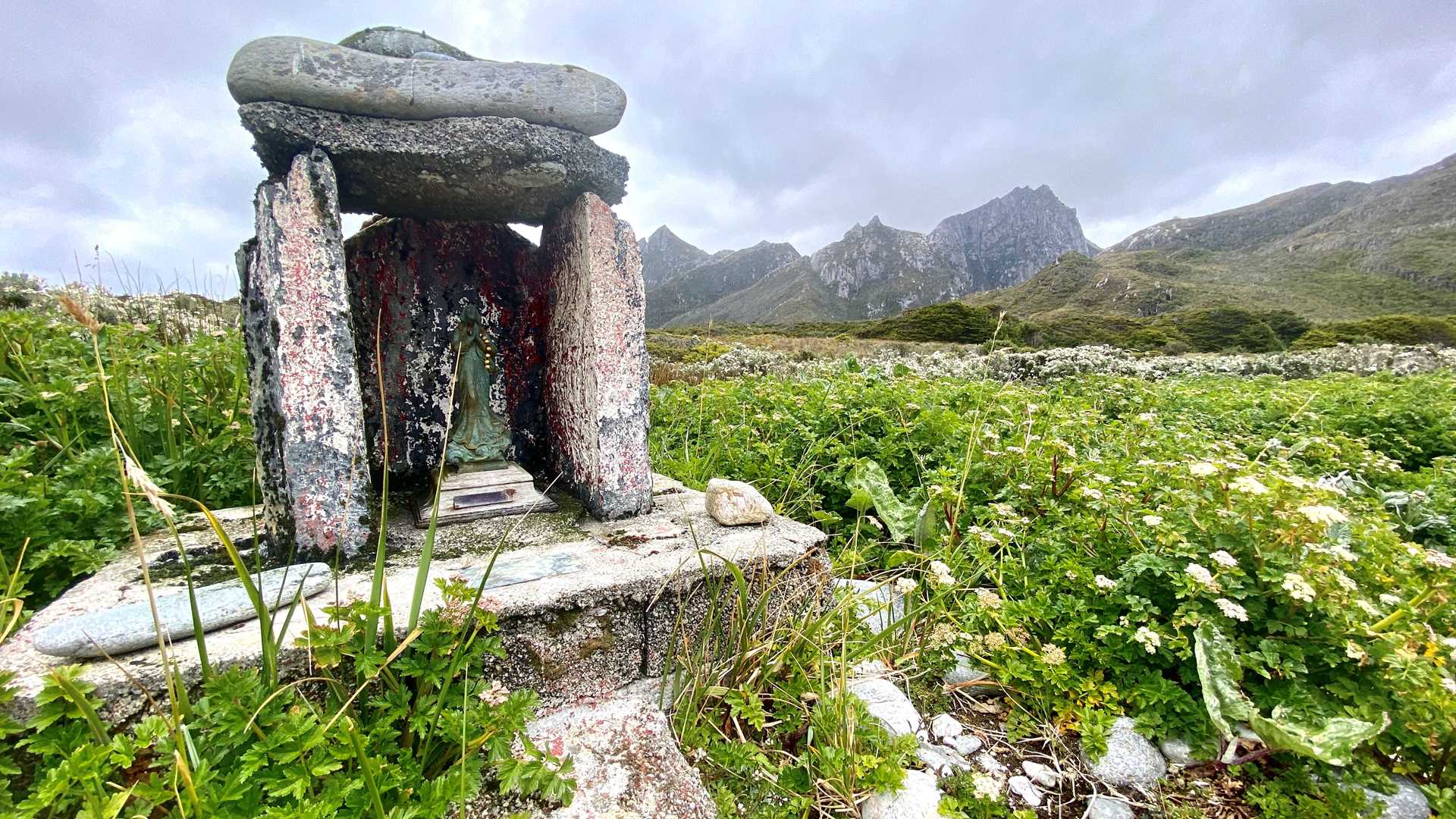An overcast morning greeted National Geographic Resolution as it cruised along the northern side of Isla de los Estados. As black-browed albatrosses (Thalassarche melanophris) danced around the ship, we took shelter in a deep fiord (Pto. Cook) protected from the Antarctic winds. After enjoying the scenery during an amazing breakfast, Zodiacs departed for shore. Guests landed on a large pebble beach and began a short hike across the island from the north to south shores. The hike took naturalists and guests across a range of Patagonian ecosystems, including intertidal, peatlands, grasslands, and evergreen forests. Upon arriving at the southern side of Isla de los Estados, several unique bird and marine species were discovered along with strong southern winds. After returning to the ship, guests enjoyed lunch as we transited east along the protected leeward side of the island. A second landing site was discovered inside a 3.5-kilometer-long fiord. After landing, guests and staff set off on a short hike through the windblown trees to a small lighthouse, the San Juan of Salvamento Lighthouse (“The Lighthouse at the End of the World”). We visited the site and explored the interior of the lighthouse, and then guests hiked back to the ship. Upon returning to the beach and transiting back to the ship, we departed for the southern side of the island. During our transit, a small pod of killer whales was encountered cruising along the coastline off the portside of the vessel. As the evening came to a close, staff began a recap and a discussion of the plants, animals, history, and geology witnessed throughout the day. Another amazing day came to an end as guests enjoyed a delicious meal and engaged in passionate conversations.
- Daily Expedition Reports
- 10 Dec 2022
Isla de los Estados, Argentina, 12/10/2022, National Geographic Resolution
- Aboard the National Geographic Resolution
- Patagonia
Jesse Humbert, Naturalist
Jefferson (Jesse) Humbert grew up on Mt. Hood in Oregon, spending much of his time exploring the natural world. Throughout his undergraduate education, Jesse focused on Biology, Education, and Spanish while exploring Argentina and Spain. During his s...
Read MoreShare Report
Patagonia: Chilean Fjords and Argentina's Staten Island
VIEW ITINERARYRelated Reports
10/29/2024
Read
National Geographic Explorer
Staten Island (Isla de los Estados)
We left the Beagle Channel in the middle of the night to cross from Tierra del Fuego to the rarely visited Staten Island. Less than 1,000 people visit this island which is frequently referred to as ‘the end of the Americas.’ At the mouth of Franklin Bay on the northwest of Staten Island, we spent time among thousands of rockhopper penguins. Across the entire island, there are an estimated 130,000 breeding pairs of rockhoppers on the island, making the total population over half a million individuals! Several species of seabirds took advantage of the brisk winds around us and we had our first look of the striated caracara, one of the rarest in the group. We have many naturalists and guests on this trip who are passionate about birds of prey, so we enjoyed watching their skillful soaring overhead. In the afternoon, the weather cooperated nicely which allowed us to Zodiac to shore for a wet landing. Once ashore, we removed our life vests, donned our packs, and trekked along the ridge above Elgor Bay. The reward at the end of the trail was a historic lighthouse considered to be the southernmost lighthouse on the continent. This lighthouse inspired the adventure novel, The Lighthouse at the End of the World by Jules Verne, a tale which includes pirates and survival in one of the harshest environments in the world.
10/28/2024
Read
National Geographic Explorer
Garibaldi Glacier and the Beagle Channel
Although offshore waters were windy, we found nice protection in Garibaldi Fjord, a long and beautiful glacial cut into the Cordillera Darwin. The towering cliffs were lined with waterfalls, and southern sea lions were hauled out on shore. We took to the Zodiacs and spent the morning weaving through brash ice and watching imperial cormorants prepare their nests. The Garibaldi Glacier did not disappoint! The cloudy and drizzly day enriched the deep blues of the glacier itself. Small calvings (bits of falling ice) kept our interest during our visit. Then, just as we needed to move on, the glacier showed signs of a larger spectacle, and BOOM! Towers of ice the size of buildings came crashing down at once, much to the delight of all. Finally, our Naturalists Shel, Isai, and Ezra enlightened us with tales of Patagonia.







